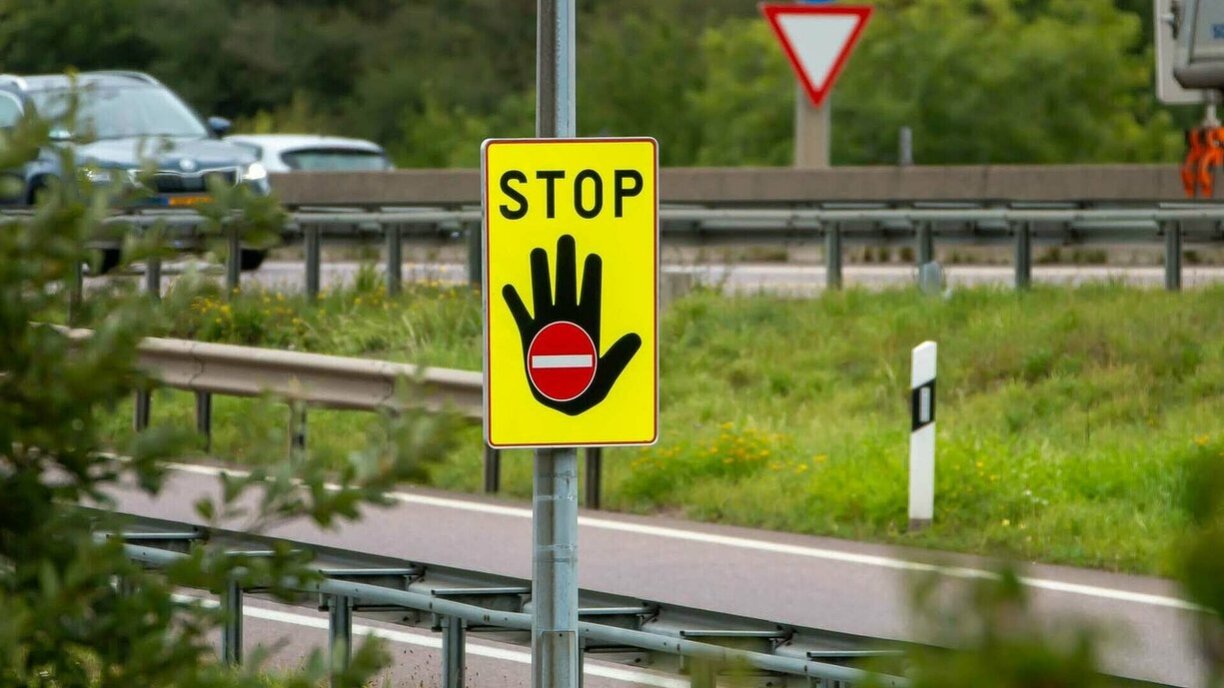
Almost two months ago, a fatal accident occurred on the A7 between the Mersch and Gousselbierg tunnels, when two cars collided after one of them entered the motorway in the wrong direction. Marc Hoscheid asked how such incidents can happen, and what can be done to prevent them in the future.
On average, the Traffic Control Centre (CITA) receives three to four reports of wrong-way drivers each month. The real figure is likely somewhat higher, but it is hard to know exactly: often the situation resolves itself before operators in CITA’s control center can even locate the vehicle on camera. In many cases, alcohol plays a role, though disorientation can also be a factor, and in some instances drivers deliberately enter the motorway against traffic.
When such a report comes in, CITA immediately activates a predefined emergency protocol. Kevin Rupp, Head of Service at CITA within Ponts et Chaussées, explains what that looks like.
“Because of this, all speed panels in the affected area are reduced to a maximum of 50km/h”, explains Kevin Rupp. “If we can provide additional information, it appears either as text saying ‘wrong-way driver’ or ‘Attention contresens’, depending on the location, along with instructions like ‘Serrer à droite’ or ‘Move to the right’. Essentially, we’re giving drivers an early warning: ‘Be careful, there is a wrong-way driver, slow down and move to the right.’”
CITA monitors the motorway network with 1,300 cameras. About half are standard cameras, while the other half are so-called detection cameras. Rupp describes their function:
“Detection cameras use technology to identify stationary objects, pedestrians, or other objects on the road. We mainly use them in tunnels or other higher-risk locations, but the majority are installed in our tunnels.”
At the National Roads Administration, authorities emphasise that motorway on-ramps are designed to guide drivers correctly. If someone drives the wrong way, it is signaled by road markings, at least two one-way signs, and two additional signs showing a hand, the one-way symbol, and the word ‘STOP’. Physical obstacles, such as tire-damaging devices, are considered risky. Paul Mengen, Deputy Director at the National Roads Administration (Ponts et Chaussées), explains:
“If you stop a vehicle on a ramp with other traffic coming down, it could get stuck. Drivers might then try to drive off the ramp and crash into an obstacle. That’s the first risk. The second is that a vehicle could injure someone or be destroyed, which would be an even bigger problem. So far, this approach hasn’t been implemented abroad either.”
In Luxembourg, about 160 ramps could theoretically be equipped with such devices, requiring maintenance twice a year. Moreover, such installations could create challenges for rescue services, who sometimes need to drive the wrong way on motorways during interventions, especially in tunnels.
When you are driving on the motorway and receive a message that there is a wrong-way driver, the advice is either to stay on the hard shoulder or, if you are near a junction, to very slowly exit onto the motorway’s hard shoulder.
And even if you realise that you yourself are the wrong-way driver, you should stay on the hard shoulder and call 112 or 113 to ask for help.